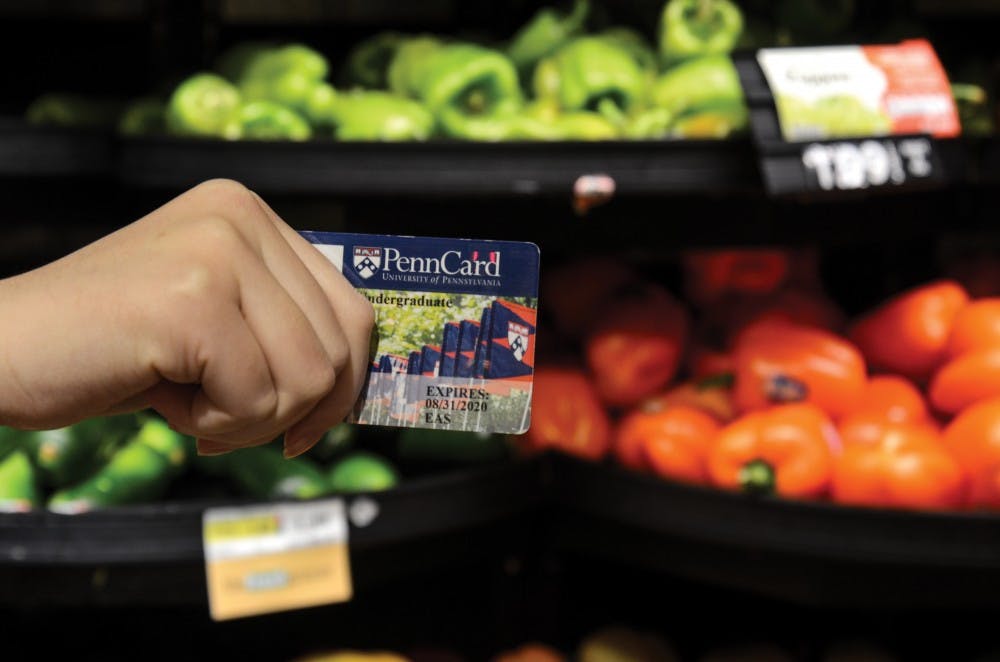Students who entered 1920 Commons on Wednesday afternoon could choose to donate their unused meal swipes to charity with simple swipes of their PennCards.
The donation day was run by Penn’s chapter of Swipe Out Hunger, which was started two years ago by College seniors Jessica Abrams and Liza Lansing. In the past, donations went to food banks; however, Wednesday was the first time Penn students could donate swipes to students in need.
The club was started after the two then-sophomores realized the extent of food insecurity in West Philadelphia through their Academically Based Community Service class. They sought out the help of their professor, Ira Harkavy, to bring the national Swipe Out Hunger model to Penn.
“We noticed that this area past Penn [West Philadelphia] is a food desert,” Abrams said. “It captured our interest in food insecurity in this city, in our community [and] around the world.”
Now a club of 30 members, Penn’s chapter of Swipe Out Hunger coordinates a variety of events ranging from a volunteer week to profit-shares with local restaurants, in which ten percent of students’ orders are donated to Philabundance. Past events included the “$4 challenge,” in which students were challenged to survive on $4 worth of food per day, the equivalent of what low-income people on food stamps would receive.
“We developed a range of programs to engage people both on and not on meal swipes,” Lansing said.
A major recurring event is the Swipe Out Hunger Donation Day, which has taken place every semester since spring 2015. For a given day each semester, Penn students could donate up to five swipes, and Penn’s dining service, Bon Appetit, would donate the corresponding monetary value to food banks such as Philabundance, the largest food bank in Delaware Valley, and SHARE, another local food program.
In the process of partnering with different food banks, Abrams and Lansing have learned that such organizations appreciate monetary donations instead of actual food items, they said.
“If we give [the food banks] the money, it gives them the ability to go and purchase in mass quantities and purchase what they know is the best quality for the price that they can get,” Lansing said.
While Penn’s Swipe Out Hunger model has not changed since its inception, after being approached by the Vice President’s Office, Abrams and Lansing were brought to the issue of food insecurity on Penn’s campus, namely the students who can’t afford their own meals beyond what Student Financial Services has allotted them.
“This year, our meal swipes are actually going to be put in students’ accounts who otherwise would not be able to afford meals,” Abrams said.
Penn’s Swipe Out Hunger has been widely successful, maxing out the cap that Bon Appetit has placed on the number of swipes it will donate.
“In order to get Penn Dining on board, we really had to look at Bon Appetit’s charitable interests,” Lansing said.
One restriction that Penn Dining set is a maximum of 1,750 swipes can be donated by students each semester. In the previous three semesters, Penn’s students have donated over 4,500 swipes — the equivalent of $16,000 — through the Swipe Out Hunger Donation Days.
While exact numbers were not yet available as of Wednesday, Lansing and Abrams estimate that students have donated over 1,000 swipes and $6,000 this Wednesday, funds that will help alleviate hunger starting right from Penn’s campus.
“The idea of a student-to-student donation has really resonated with students,” Abrams said. “We got our strongest showing to date today and look forward to working with the University, other student groups and local business to grow our impact.”









